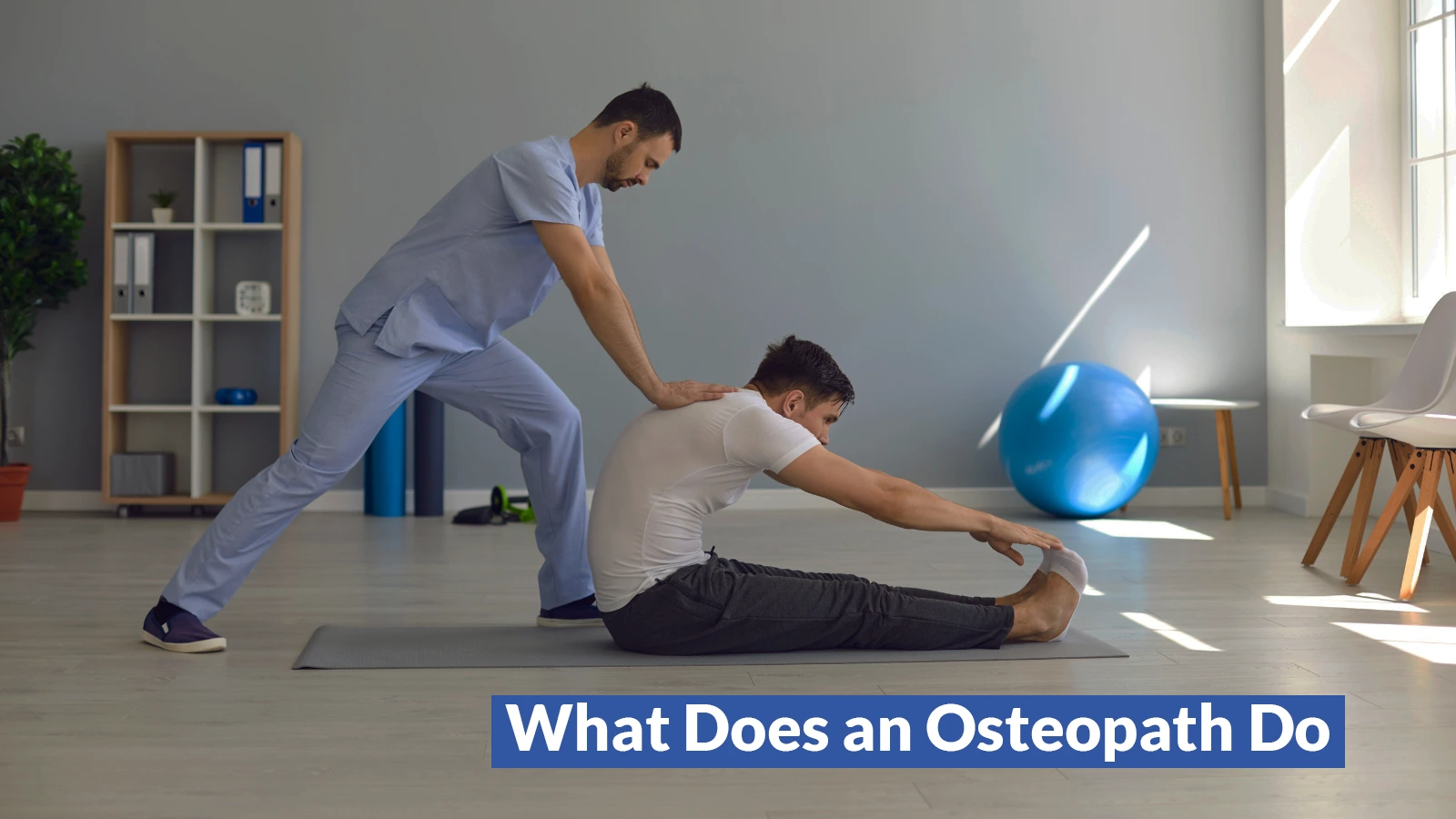Your body is a complex network of tissues and muscles, interconnected, and working in perfect unison. But when you throw stress, poor posture, or repetitive strain on this complex network, things can get a little unmanageable. That’s where an osteopath comes in, a skilled provider ready to diagnose and repair the issues causing your discomfort.
What Does An Osteopath Do?
Osteopaths view the body as an integrated and interconnected whole. Osteopaths are DOs that recognise that the health of one part of the body can influence the health of other parts including the natural connection between the mind, body, and spirit. To explain it further, osteopaths believe that all the systems and parts of the body, including the musculoskeletal, circulatory, nervous, and respiratory systems, are interdependent.
A trained osteopath physician is a fully trained and licenced provider having the initials “Doctor of Osteopathic Medicine / DO” after their name.
These doctors of osteopathic medicine ditch scalpels for whispers, listening deeper than bones to untangle the physical and emotional clues behind your pain. They’re trained on 300-500 hours of “Osteopathic Manipulation Therapy.”
Having a holistic approach, Osteopaths see the map connecting your spine to your stomach, your mood to your movement. So, when pain whispers hidden messages, they translate them and strategise personalised healing plans for your unique self.
Osteopaths in Australia spend 4.5-5 years at university, mastering the science and hands-on skills of-osteopathy.
Techniques Used By Osteopaths
Skilled practitioners employ specialised techniques in osteopathy, emphasising a holistic and personalised approach. These methods empower the body’s structures for optimal function and recovery of lost capabilities. Grounded in the philosophy of restoring organic and non-organic movement, osteopaths utilise diverse techniques tailored to individual needs. These techniques play a crucial role in fostering overall health and well-being.
Here are only some of the many techniques used by osteopaths:
Soft tissue massage
Relaxes muscles, improves circulation, and relieves pain.
Spinal manipulation
Gentle adjustments to restore proper alignment and movement in joints.
Articulation
Targeted movements of joints to improve flexibility and range of motion.
Stretching
Lengthens muscles and improves joint mobility.
Dry needling
Insertion of thin needles into trigger points to relieve muscle tension.
Visceral manipulation
Gentle movement of organs to improve their function and address musculoskeletal issues.
Taping techniques
Kinesiotape and other tapes provide support and stability to joints and muscles.
Cranial Osteopathy
Cranial Osteopathy is a manual approach that influences the structure and cerebral spinal fluid surrounding the central nervous system, focusing on creating an impact on the total body.
Myofascial release
Addresses restrictions in the fascia, a connective tissue network throughout the body.
Lymphatic technique
This technique promotes lymphatic fluid circulation to improve drainage and reduce swelling.
Counterstrain
Addresses tender points in muscles and ligaments through passive positioning.
Ligamentous Articular Strain (LAS)
Soft tissue techniques, believed to have been used earlier by osteopathy’s founder.
Still Technique
Rediscovered techniques focusing on direct articulatory manipulation with axial compression.
Functional Technique
Identifies and treats dysfunction based on whole-body movements and responses.
Chapman’s Reflexes
Palpable points associated with internal organ dysfunction, used for diagnosis and treatment.
High-Velocity Low Amplitude Thrusting (HVLA) & Osteoarticular Technique
Gentle manipulations to increase joint range of motion and reduce muscle tension.
Somatoemotional Release
Addresses emotional trauma stored in the body’s tissues through gentle fascial and cranial techniques.
Osteopathic Manipulative Treatment (OMT)
This broad term encompasses many of the listed techniques, emphasising the individualised approach of osteopathy.
What Does An Osteopath Treat?
Osteopaths specialise in treating musculoskeletal issues, helping people of all ages from newborns to seniors. Some of the reasons why people may opt for osteopathy services are:
Foot and ankle pain
Whether it’s plantar fasciitis, heel spurs, or ankle instability, osteopaths can help reduce pain, improve mobility, and prevent future pain.
Back, neck, and sciatica pain
Gentle adjustments and techniques can ease discomfort, improve posture, and restore proper nerve function.
Headaches and migraines
Osteopathy can address underlying issues contributing to headaches, like neck tension or cranial imbalances, offering long-term relief.
Work-related, Sports injuries
From sprains and strains to overuse injuries, osteopaths can assist with work-related injuries and also help athletes recover faster and prevent recurrences.
Postural and jaw pain
Osteopathy can address misalignments and tension in the head, neck, and spine, leading to improved posture and reduced jaw pain.
Arthritis and osteoporosis
While not a cure, osteopathy can manage pain and improve function in individuals with these conditions, promoting overall well-being.
Benefits Of Seeing An Osteopath
Osteopathy is a well-studied practice that can treat almost anything, from arthritis, back pain, and headaches to gut issues and pregnancy discomfort. Osteopathic treatment is pain-free and can help people suffering from disturbed sleep cycles and conditions related to work-related stress, among other things.
While there are numerous benefits of seeing an osteopath, here are only a few of them:
- Osteopathic treatments release tension from your body and reduce pain and tension headaches.
- Osteopaths help to ease the stiffness in your joints.
Several techniques used by osteopaths support your spine, especially with desk-based professionals. - Osteopathic treatments offer quick yet lasting healing results without any medication. It improves your blood circulation which will lead to more power and quicker recovery.
- Osteopathy boosts your ability to move freely and without pain.
CONCLUSION
Damages may come your way, but they shouldn’t stay there forever and rob your right to live an emotionally and physically active life. Here at Osteopath Sydney, we greatly believe in improving your health through a drug-free approach that not only gives you quick comfort but also aims for lasting relief. Osteopath Sydney stands as one of the premier clinics in Australia, dedicated to providing exceptional osteopathic services tailored to your well-being. We are capable, qualified and trained to provide osteopathic treatment for all ages.


